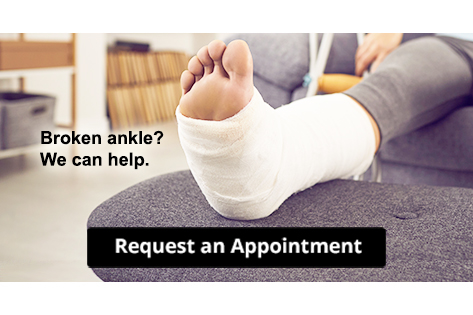Items filtered by date: March 2024
Types of Metatarsal Foot Fractures
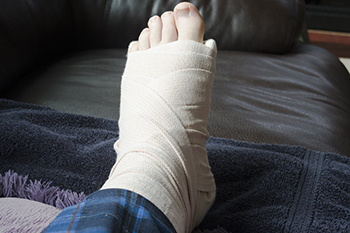
Metatarsal fractures encompass a variety of injuries, from acute trauma to stress fractures in the five long bones of the feet. Acute metatarsal fractures occur suddenly, often due to forceful impact, like dropping a heavy object on it or sports-related incidents. These fractures can be open, where the skin is broken, or closed, and may be displaced, requiring realignment and stabilization by a podiatrist. The fifth metatarsal bone is particularly prone to acute fractures, commonly occurring at various points along its length. Stress fractures, on the other hand, develop gradually from repetitive pounding, resulting in hairline cracks that may be difficult to detect. However, they still require proper diagnosis and treatment to prevent worsening symptoms. Recognizing the signs of metatarsal fractures and seeking timely medical attention from a podiatrist is important. If you suspect a metatarsal fracture or experience midfoot pain it is suggested that you make an appointment with a podiatrist for an exam, diagnosis, and treatment options.
A broken foot requires immediate medical attention and treatment. If you need your feet checked, contact one of our doctors from Godoy Foot and Ankle Center. Our doctors can provide the care you need to keep you pain-free and on your feet.
Broken Foot Causes, Symptoms, and Treatment
A broken foot is caused by one of the bones in the foot typically breaking when bended, crushed, or stretched beyond its natural capabilities. Usually the location of the fracture indicates how the break occurred, whether it was through an object, fall, or any other type of injury.
Common Symptoms of Broken Feet:
- Bruising
- Pain
- Redness
- Swelling
- Blue in color
- Numbness
- Cold
- Misshapen
- Cuts
- Deformities
Those that suspect they have a broken foot shoot seek urgent medical attention where a medical professional could diagnose the severity.
Treatment for broken bones varies depending on the cause, severity and location. Some will require the use of splints, casts or crutches while others could even involve surgery to repair the broken bones. Personal care includes the use of ice and keeping the foot stabilized and elevated.
If you have any questions please feel free to contact our office located in Wayne, NJ . We offer the newest diagnostic and treatment technologies for all your foot and ankle needs.
Injury Prevention for Runners
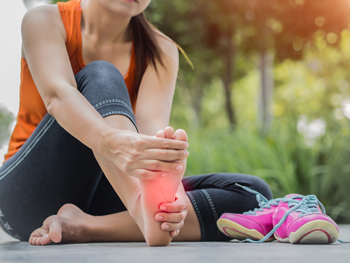
All runners are susceptible to a range of foot injuries stemming from the repetitive nature of running and other factors. Neglecting flexibility training can lead to decreased range of motion and increased risk of injuries such as strains and tears. Cross-training, incorporating activities like swimming or cycling, can mitigate these risks by engaging different muscle groups and reducing overuse injuries. Additionally, a balanced approach to fitness will help prevent foot injuries. Podiatrists play a significant role in this respect, offering expertise in foot and lower limb biomechanics, gait analysis, and injury prevention. They can guide proper footwear selection, orthotic devices, and personalized exercise regimens to address individual needs and reduce injury risk. If you are a runner, it is suggested that you make an appointment with a podiatrist to learn more about injury prevention in running so you can enjoy this port for the long term.
All runners should take extra precaution when trying to avoid injury. If you have any concerns about your feet, contact one of our doctors of Godoy Foot and Ankle Center. Our doctors will treat your foot and ankle needs.
How to Prevent Running Injuries
There are a lot of mistakes a runner can make prior to a workout that can induce injury. A lot of athletes tend to overstretch before running, instead of saving those workouts for a post-run routine. Deep lunges and hand-to-toe hamstring pulls should be performed after a workout instead of during a warmup. Another common mistake is jumping into an intense routine before your body is physically prepared for it. You should try to ease your way into long-distance running instead of forcing yourself to rush into it.
More Tips for Preventing Injury
- Incorporate Strength Training into Workouts - This will help improve the body’s overall athleticism
- Improve and Maintain Your Flexibility – Stretching everyday will help improve overall performance
- “Warm Up” Before Running and “Cool Down” Afterward – A warm up of 5-10 minutes helps get rid of lactic acid in the muscles and prevents delayed muscle soreness
- Cross-Training is Crucial
- Wear Proper Running Shoes
- Have a Formal Gait Analysis – Poor biomechanics can easily cause injury
If you have any questions, please feel free to contact our office located in Wayne, NJ . We offer the newest diagnostic and treatment technologies for all your foot care needs.
Foot and Ankle Injury Rehab Exercises
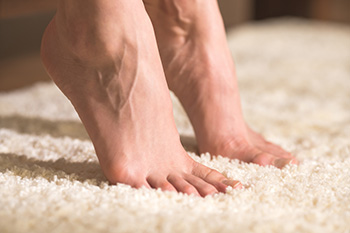
Foot and ankle injuries require rehabilitation exercises overseen by a podiatrist to restore strength, flexibility, and stability. These foot and ankle exercises include ankle pump-ups, targeting improved ankle dorsiflexion and lower leg muscle strengthening. Ankle pump-downs enhance ankle plantarflexion and strengthen calf muscles. Bent-knee wall stretches are specifically focused on the soleus muscle for recovery from disuse muscle atrophy. Straight-knee wall stretches are employed for comprehensive calf muscle stretching. Toe pick-ups are aimed at strengthening toe muscles and enhancing flexibility. Heel raises are performed to fortify toes, feet, and calves. It's imperative to execute these exercises under the guidance of a podiatrist to ensure correct technique and to prevent further injury. If you encounter severe discomfort or pain while performing rehab exercises, it is suggested that you make an appointment with a podiatrist as soon as possible.
Exercising your feet regularly with the proper foot wear is a great way to prevent injuries and build strength. If you have any concerns about your feet, contact one of our doctors from Godoy Foot and Ankle Center. Our doctors can provide the care you need to keep you pain-free and on your feet.
Exercise for Your Feet
Exercise for your feet can help you gain strength, mobility and flexibility in your feet. They say that strengthening your feet can be just as rewarding as strengthening another part of the body. Your feet are very important, and we often forget about them in our daily tasks. But it is because of our feet that are we able to get going and do what we need to. For those of us fortunate enough to not have any foot problems, it is an important gesture to take care of them to ensure good health in the long run.
Some foot health exercises can include ankle pumps, tip-toeing, toe rises, lifting off the floor doing reps and sets, and flexing the toes. It is best to speak with Our doctors to determine an appropriate regimen for your needs. Everyone’s needs and bodies are different, and the activities required to maintain strength in the feet vary from individual to individual.
Once you get into a routine of doing regular exercise, you may notice a difference in your feet and how strong they may become.
If you have any questions please feel free to contact our office located in Wayne, NJ . We offer the newest diagnostic and treatment technologies for all your foot and ankle needs.
Ankle Fracture? Don’t Wait for Treatment
Preventing Elderly Falls With the Right Shoes
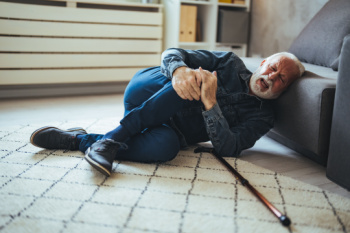 Choosing the right footwear can help prevent falls among the elderly. Proper shoes contribute significantly to stability and overall foot health. Shoes with non-slip soles provide better traction, reducing the risk of slipping on various surfaces. Additionally, supportive shoes with a firm heel counter and adequate arch support help maintain balance and prevent ankle injuries. For elderly individuals, shoes with adjustable straps or laces ensure a secure fit, minimizing the chances of tripping. Narrow and high-heeled shoes, as well as shoes without straps or laces, are associated with a greater risk of falling. When there are conditions that affect the feet, such as diabetes and arthritis, appropriate footwear is even more important. Better shoes can also help elderly people maintain independence and mobility. If you are trying to prevent yourself or someone else from falling, make an appointment with a podiatrist who can assess foot issues and offer suggestions for your next pair of shoes.
Choosing the right footwear can help prevent falls among the elderly. Proper shoes contribute significantly to stability and overall foot health. Shoes with non-slip soles provide better traction, reducing the risk of slipping on various surfaces. Additionally, supportive shoes with a firm heel counter and adequate arch support help maintain balance and prevent ankle injuries. For elderly individuals, shoes with adjustable straps or laces ensure a secure fit, minimizing the chances of tripping. Narrow and high-heeled shoes, as well as shoes without straps or laces, are associated with a greater risk of falling. When there are conditions that affect the feet, such as diabetes and arthritis, appropriate footwear is even more important. Better shoes can also help elderly people maintain independence and mobility. If you are trying to prevent yourself or someone else from falling, make an appointment with a podiatrist who can assess foot issues and offer suggestions for your next pair of shoes.
Preventing falls among the elderly is very important. If you are older and have fallen or fear that you are prone to falling, consult with one of our doctors from Godoy Foot and Ankle Center. Our doctors will assess your condition and provide you with quality advice and care.
Every 11 seconds, an elderly American is being treated in an emergency room for a fall related injury. Falls are the leading cause of head and hip injuries for those 65 and older. Due to decreases in strength, balance, senses, and lack of awareness, elderly persons are very susceptible to falling. Thankfully, there are a number of things older persons can do to prevent falls.
How to Prevent Falls
Some effective methods that older persons can do to prevent falls include:
- Enrolling in strength and balance exercise program to increase balance and strength
- Periodically having your sight and hearing checked
- Discuss any medications you have with a doctor to see if it increases the risk of falling
- Clearing the house of falling hazards and installing devices like grab bars and railings
- Utilizing a walker or cane
- Wearing shoes that provide good support and cushioning
- Talking to family members about falling and increasing awareness
Falling can be a traumatic and embarrassing experience for elderly persons; this can make them less willing to leave the house, and less willing to talk to someone about their fears of falling. Doing such things, however, will increase the likelihood of tripping or losing one’s balance. Knowing the causes of falling and how to prevent them is the best way to mitigate the risk of serious injury.
If you have any questions, please feel free to contact our office located in Wayne, NJ . We offer the newest diagnostic and treatment technologies for all your foot care needs.
